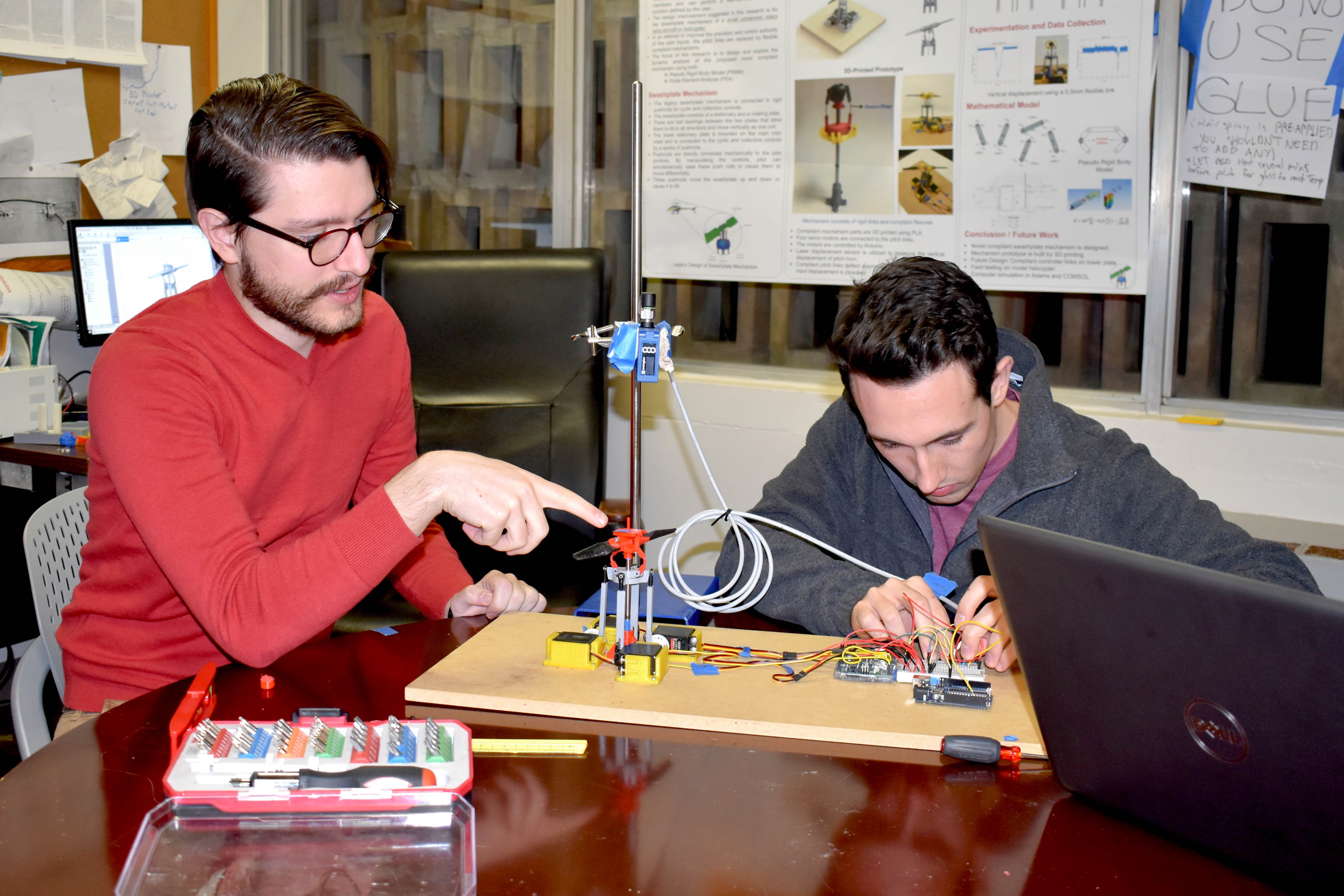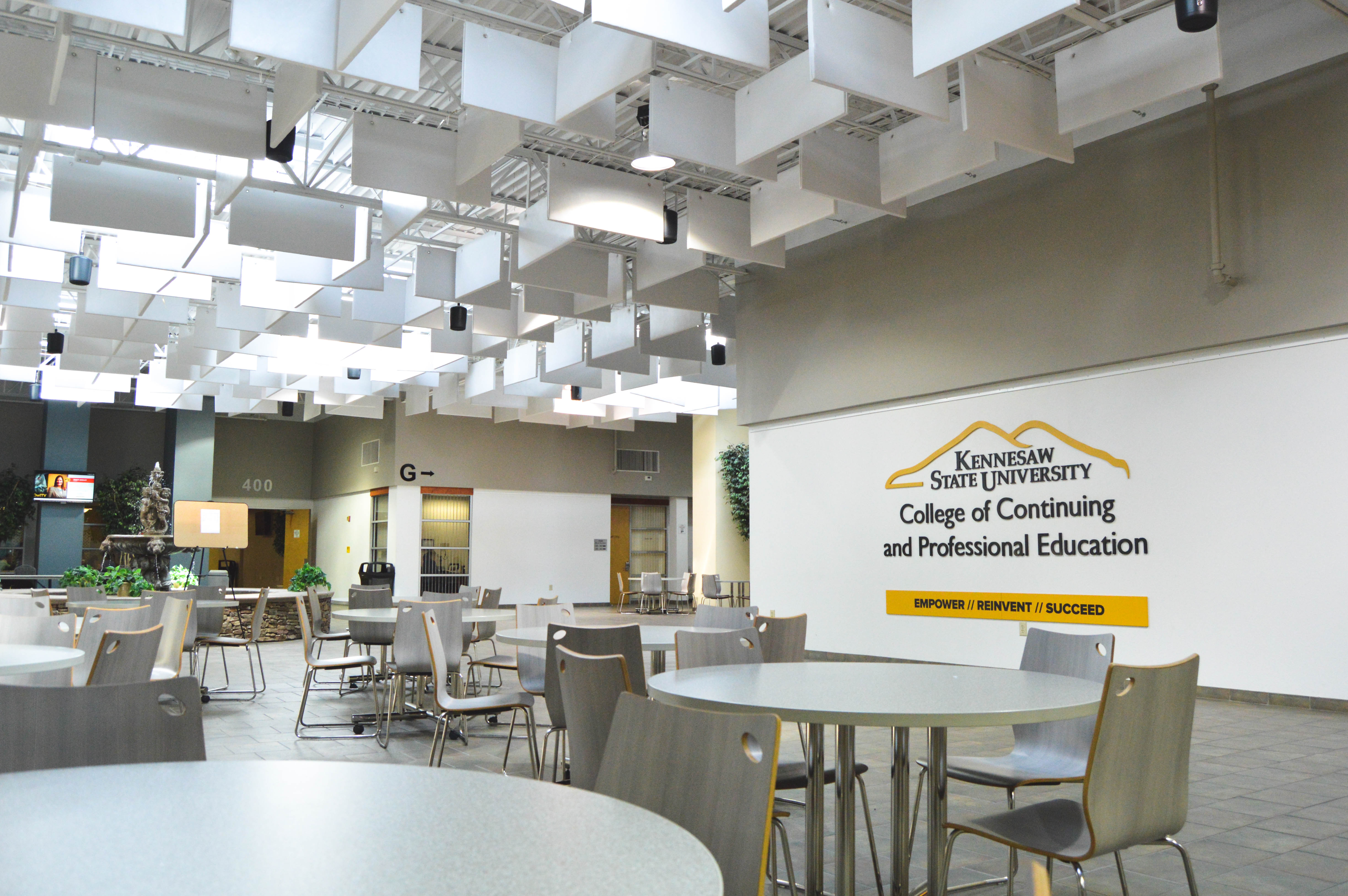Two Kennesaw State mechanical engineering students have recently begun conducting rigorous testing for part of their ongoing research in developing much more efficient helicopter technology.
Niko Giannakakos and Trevor Warnix have been conducting research that involves developing a helicopter swashplate, a small circular plate that effectively translates the pilot’s input while requiring less maintenance than the previous design. Warnix said the concept contains the same principles, but the latest design consists of a rigid link, as opposed to a compliant link, that is connected to the propeller and will likely produce similar results.
“The goal is to determine whether or not using the compliant link versus the rigid link gives the same amount of output,” Warnix said.
The helicopter is heavily dependent on the swashplate mechanism in terms of maneuverability and stability. The swashplate’s original design consisted of several mechanical links and often required maintenance. Giannakakos and Warnix used a 3D printer to create a device that uses several links that require no lubrication in order to reduce the overall output of the device.
The student researchers have yet to see their new design in action. However, the prototype of the compliant swashplate has been used for field testing. Warnix said that they have used laser displacement sensors to determine the amount of output their design is capable of generating. Warnix added that it has proven to be efficient with collecting data and is performing up to speed.
Warnix, who intends to pursue a master’s degree in aerospace technology following graduation, began working on this project with Giannakakos while under the instruction of associate professor of system engineering Adeel Khalid and assistant professor of mechanical engineering Ayse Tekes.
“I don’t regret being put on the team at all because of how exciting it has been,” Warnix said. “If I have the choice of picking a project, it would be this one because of the real-life applicability.”
Warnix added that one of the greatest takeaways from this project was studying under two professors with different research approaches.
“Khalid taught me the importance of the quality of our work and always pushed us to find the best data for our design,” Warnix said. “Tekes’ approach was similar, however, it was more teamwork oriented. He taught me the importance of seeking research as a team and establishing a healthy team-building environment.”
At the National Conference of Undergraduate Research, hosted by KSU on April 11-13, Warnix hopes to meet and network with people within his field and receive feedback on the design.
“Our presentation at the NCUR will allow us to showcase that we have a novel idea and [to] discover more potential areas of research,” Warnix said.


